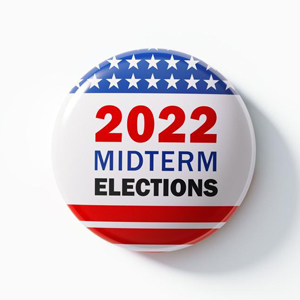IndiaScope: The November Surprise

Before the midterm elections, pundits declared that a “red wave” would greatly empower the GOP. Not only did it fail to materialize, but the Democrats got to retain control of the Senate. What can we learn about the community’s national and local voting patterns?
Let’s take a quick look at the last three years. Despite Trump’s previous inroads in some sections of the Indian-American community, and the huge turnout for the Howdy Modi rally in Houston in 2019, the community reliably voted for Biden and the Democratic party in 2020 with majorities of well over 60 percent. While the results came as a surprise to those who expected the Modi-Trump hype to result in a shift in the community’s voting patterns, others noted that most Indian-Americans who support Modi remain firmly in the Democratic camp in this country.
Surveys of the community prior to the 2020 election revealed that while Indian-Americans remain greatly interested in news and politics from their country of origin, the issues that matter to them as U.S. citizens are domestic. This explains why the Trump-Modi relationship did not much affect the way they voted in the national election. A 2020 Carnegie Endowment poll, Indian American Attitudes Survey, revealed that issues like healthcare and the economy motivated them rather than Indo-American relations or politics in India.
A follow-up Carnegie report in 2021 on the community showed that while their vote in U.S. elections was greatly determined by domestic issues, political and religious divisions in India (which have grown deeper in the last few years) seem to have made an inevitable impact on the community here as well. It claims that Indian-Americans hold more conservativeleaning views on issues involving immigration, minorities, and affirmative action when the policies are Indian rather than American. It also reveals that party identification in the U.S. mattered to Indian-American respondents in terms of what they revealed as their comfort level in forming friendships with those who identify with the other party.
So what did all this mean for the community as we do a post-mortem of the 2022 midterms? The premidterm survey and reports taken together may have indicated that if it is true that Indian-Americans (like other Americans) are motivated most by domestic political, economic, and social issues, then the current economy may have been a meaningful variable in their switch in votes from Democratic to Republican, as the country struggled with the economy, inflation, etc.
What early exit polling data are suggesting is that while there was some switch in party affiliation rightward on the part of Hispanic and Asian Americans, that the switch was nowhere close to what pre-election polls predicted. The data suggest that compared to the 2018 midterm elections, Hispanic and Asian Americans moved rightward in double digits, but compared to the 2020 election, the move was only in single digits. The number of Asian Americans who claimed to be independents, however, increased dramatically to 35 percent (Politico, 11/13/2022).
We also don’t know the numbers on specifically Indian-American voters yet. Since they are the most loyal Democratic voters of all the Asian Americans, their vote will be of special interest. Here in Georgia, we know that Asian Americans as a whole, and Indian-Americans in particular, played a significant role in the Warnock-Ossoff senate wins in 2020. It would seem that this continued for Senator Warnock, if not for Stacy Abrams, in this election. This is despite the fact that the Abrams’ campaign did an unprecedented reach-out to the Asian American and AAPI community as a whole during and since her 2018 bid for Governor. More Asian Americans were registered and contacted by her campaign for their vote than ever before by any Georgia candidate, and the Asians for Abrams organization was strong.
No doubt much analysis remains to be done—and in the weeks and months ahead we will get a fuller picture of how Asian American and Indian- American voters made their presence felt in the midterm election.

Tinaz Pavri is Professor of Political Science and Director of the Asian Studies Program at Spelman College, Atlanta. A recipient of the Donald Wells Award from the Georgia Political Science Association, she’s the author of the memoir Bombay in the Age of Disco: City, Community, Life.
Enjoyed reading Khabar magazine? Subscribe to Khabar and get a full digital copy of this Indian-American community magazine.
blog comments powered by Disqus










